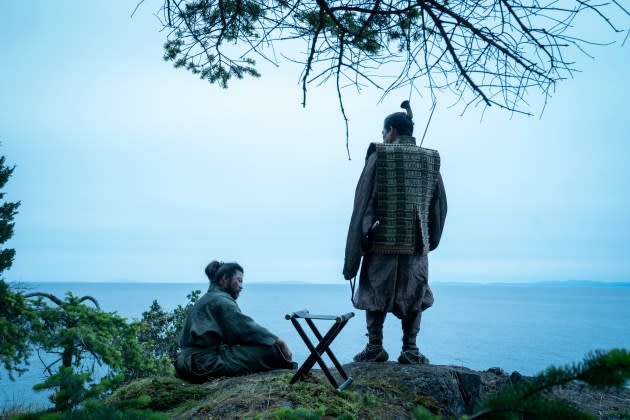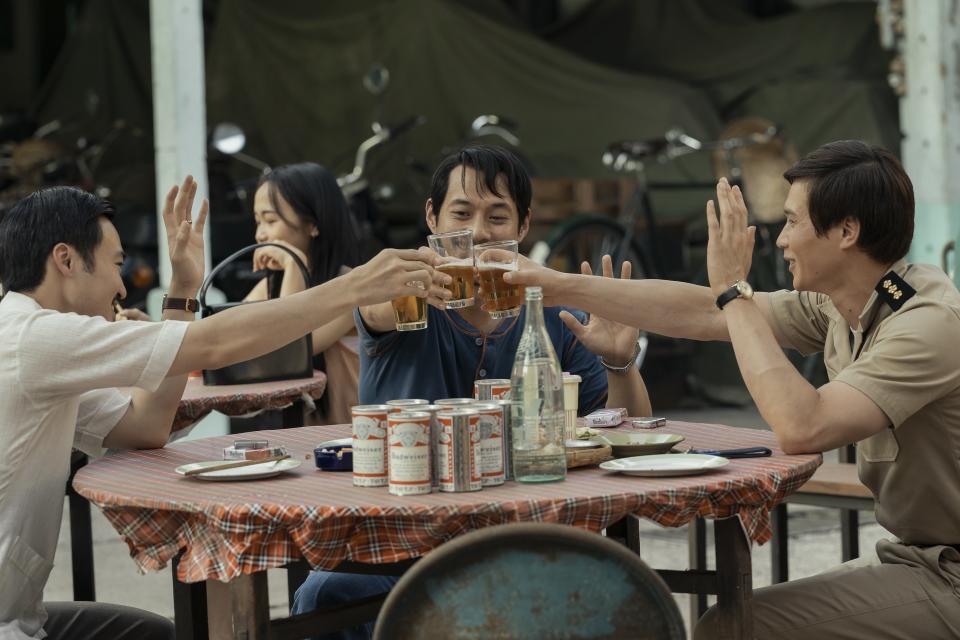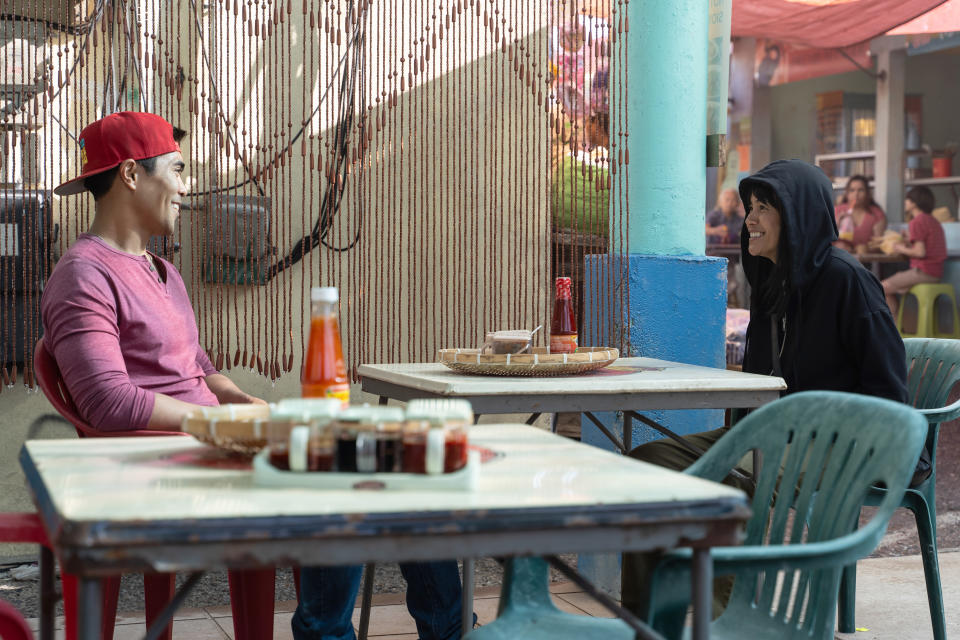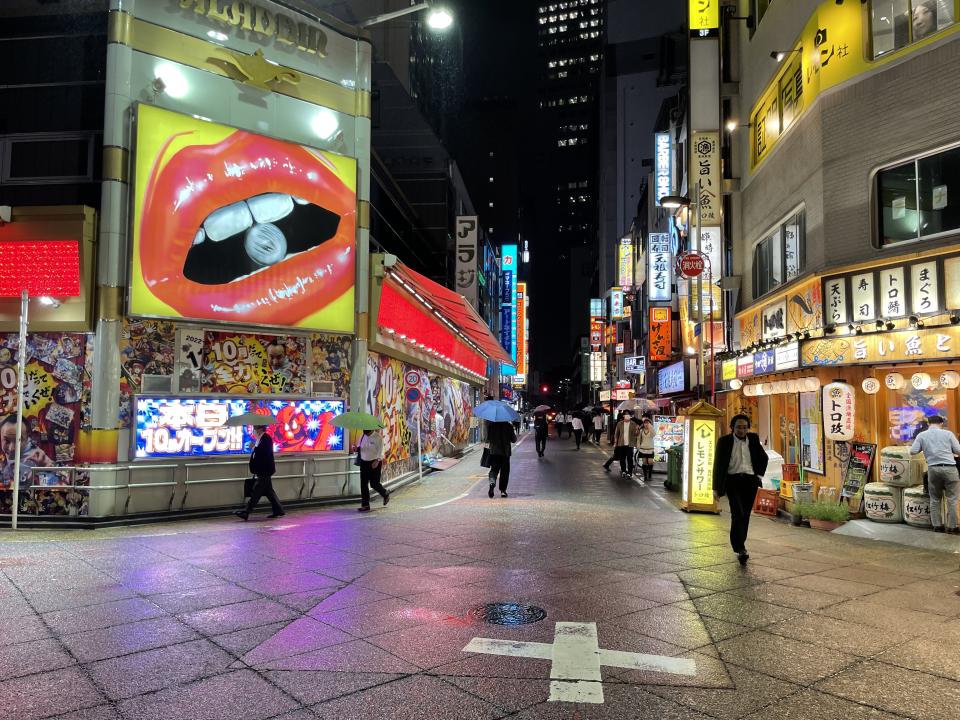Production Designers Behind ‘The Sympathizer,’ ‘Shogun’ and More Discuss Creating the Look of Sprawling Asian Cities

FX’s “Shogun” had planned to shoot in Japan; due to the pandemic, the production shifted to Vancouver.
Production designer Helen Jarvis had never been to Japan, nor had she read James Clavell’s original novel that the series is based on. Nonetheless, she was determined to bring authenticity to the locations when building the world of feudal Japan in the 1600s. FX’s drama series required Jarvis to transform two exterior backlots and two soundstages, building everything from a fishing village to a harbor to royal palaces.
More from Variety
How 'Shogun,' 'The Crown' and More Dramas Pulled Off Historically Accurate Sounds
'The Sympathizer' Cast Breaks Down the Mysterious Meaning of 'Nothing' in the Finale
Speaking with Variety, Jarvis says, “At the time, Osaka was a significantly large city. It’s a very convoluted coastline. If you look at a contemporary view, it’s mostly built up with concrete with many inlets and there wasn’t one huge harbor.”
The old mill was a cedar factory with a man-made inlet; it became the perfect setting to build the port and fishing harbor. Jarvis and her team built jetties and buildings that wrapped around the water. Those buildings were what Jarvis describes as humble.
“With the city of Osaka, we would graduate from those buildings owned by the fishermen who lived right at the end of the water. The buildings would grow, and as you approach the castle, the houses would get larger and more prestigious,” Jarvis says.
“Shogun” isn’t the only recent show where production designers had to tackle transforming unlikely locations into Asian cities. It’s a commonality that binds several titles vying for Emmy consideration this season, including HBO’s “The Sympathizer” and Fox’s “The Cleaning Lady.”
“The Sympathizer” follows a captain, played by Hoa Xuande, in the South Vietnamese army who’s secretly spying for the North Vietnamese communists. Originally, the production was set to take place in Vietnam which would have provided an authentic landscape; due to censorship issues, filming moved to Thailand. Production designers Donald Graham Burt and Alec Hammond worked on the series.
“One of the challenges of Thailand is the architecture,” Hammond says. Thailand had never been colonized by a Western power as opposed to Vietnam, which had gone back and forth between the French and the Americans. “You didn’t have the center of Saigon being French colonial or the American influence with large hotels. You have sections of Bangkok that had the feeling, but they weren’t colonial,” said Hammond.
But there was a lot of location scouting to find areas untouched by contemporary architecture. That meant looking as far as 50 miles outside of Bangkok for locations. One place that did pan out was the Chinatown section of Bangkok. It hadn’t changed much and the architecture was still anchored in the 1950s.
“We were able to use a street where the spy apartment was and the outdoor beer garden,” Hammond says.

The other challenging factor was signage. Thailand had signs in English and Thai, so the set dressing team made hundreds of hand-painted signs in Vietnamese.
“When they’re tracking the spy from the car as she goes to the mailbox and picks up the roll of film, it’s fairly restrained in terms of the distance you see down the street, but we had hundreds of signs on there on that street to give the character of Saigon at that time,” says Hammond.
The fall of Saigon sequence at the end of the first episode was filmed on an airfield affiliated with the Thai Army. Hammond also recycled sets. The area was later used for another sequence set in Guam.
Roshelle Berliner did not have the luxury of traveling to Manila for “The Cleaning Lady.” Instead, she was tasked with transforming a parking lot in Albuquerque into the bustling streets of the city. At the start of season three, Fiona (Martha Millan) has been deported from America and is trying to make her way back, from he Philippines.
Berliner’s unique challenge was negotiating a winter shoot with very little prep time. Google Maps was her greatest resource for researching a country she had never visited. “You can land anywhere and drive around, I screen-grabbed buildings and everything.”
Berliner says, “The structures are shipping containers that are dressed theatrically as Manila. The steel of the shipping material matches some of the things I saw in Manila so that helped,”
With a mid-winter shoot, Berliner needed to capture the humidity and mildew feeling of Manila: “With the artistry of paint, we tried to infuse that as best as we could.”
Another observation was the texture of the buildings, Berliner notes, “If there was damage to a building, I saw materials that people applied to the buildings. It was very patchwork-like, so we tried to get it all there for the camera.”
She couldn’t use real wires for the electricity cables that run above the streets and fill the Manila skies, so she had to find an alternative source. Her solution was to use black rope. “We made a faux wiring system,” she says.

“3 Body Problem” was another show that had to recreate China and the Cultural Revolution for its opening sequence. Deborah Riley shot those sequences in the U.K.
A few shows were fortunate to shoot in the cities where their shows were set. Lulu Wang’s “Expats” was shot on location in Hong Kong.
Max’s “Tokyo Vice” had the luxury of shooting on location, but admittedly, it wasn’t easy for location manager Masa Aikawa.
“Tokyo is one of the most difficult places to film. It’s not film-friendly,” Aikawa says, speaking through a translator. However, several elements made the shoot and finding locations easy. “We had a budget, and we had a number of people working on the project, and that made an opportunity to show that authentic side of Tokyo,” he says.
Additionally, the showrunners met with the Tokyo Box Commission to break down what the show would be about and met with the city’s Governor Yuriko Koike. “That was a big deal and it made things easier to get filming permits.”

Those meetings helped Akiwa secure the permit to shoot in the Akasaka district renowned for its bars and clubs. “We looked at Shinjuku City and Ginza, the shopping district, but in the end, Akasaka seemed the perfect place for those scenes, and it was outside.”
Best of Variety
Sign up for Variety’s Newsletter. For the latest news, follow us on Facebook, Twitter, and Instagram.


